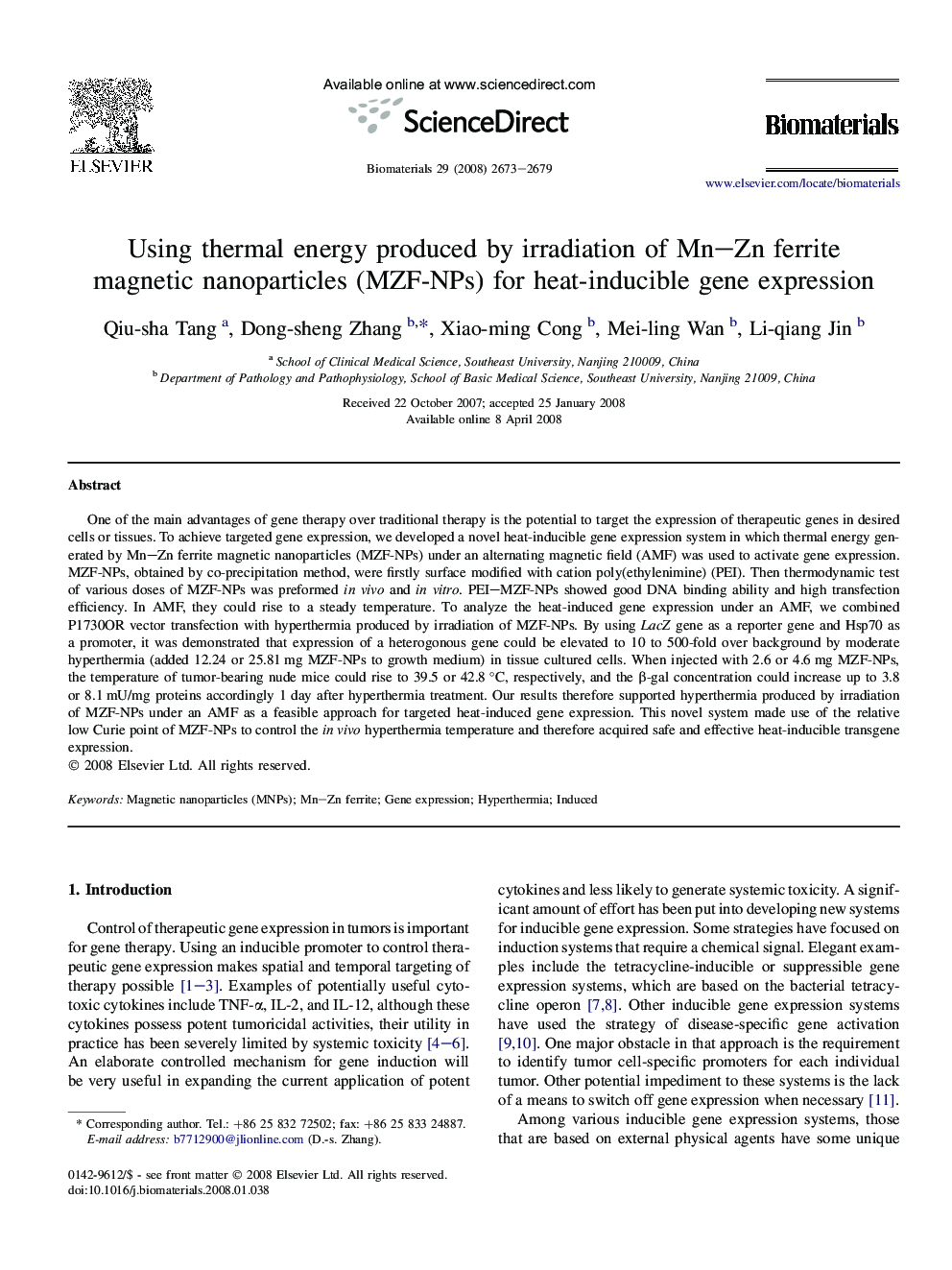| کد مقاله | کد نشریه | سال انتشار | مقاله انگلیسی | نسخه تمام متن |
|---|---|---|---|---|
| 11187 | 723 | 2008 | 7 صفحه PDF | دانلود رایگان |

One of the main advantages of gene therapy over traditional therapy is the potential to target the expression of therapeutic genes in desired cells or tissues. To achieve targeted gene expression, we developed a novel heat-inducible gene expression system in which thermal energy generated by Mn–Zn ferrite magnetic nanoparticles (MZF-NPs) under an alternating magnetic field (AMF) was used to activate gene expression. MZF-NPs, obtained by co-precipitation method, were firstly surface modified with cation poly(ethylenimine) (PEI). Then thermodynamic test of various doses of MZF-NPs was preformed in vivo and in vitro. PEI–MZF-NPs showed good DNA binding ability and high transfection efficiency. In AMF, they could rise to a steady temperature. To analyze the heat-induced gene expression under an AMF, we combined P1730OR vector transfection with hyperthermia produced by irradiation of MZF-NPs. By using LacZ gene as a reporter gene and Hsp70 as a promoter, it was demonstrated that expression of a heterogonous gene could be elevated to 10 to 500-fold over background by moderate hyperthermia (added 12.24 or 25.81 mg MZF-NPs to growth medium) in tissue cultured cells. When injected with 2.6 or 4.6 mg MZF-NPs, the temperature of tumor-bearing nude mice could rise to 39.5 or 42.8 °C, respectively, and the β-gal concentration could increase up to 3.8 or 8.1 mU/mg proteins accordingly 1 day after hyperthermia treatment. Our results therefore supported hyperthermia produced by irradiation of MZF-NPs under an AMF as a feasible approach for targeted heat-induced gene expression. This novel system made use of the relative low Curie point of MZF-NPs to control the in vivo hyperthermia temperature and therefore acquired safe and effective heat-inducible transgene expression.
Journal: Biomaterials - Volume 29, Issue 17, June 2008, Pages 2673–2679